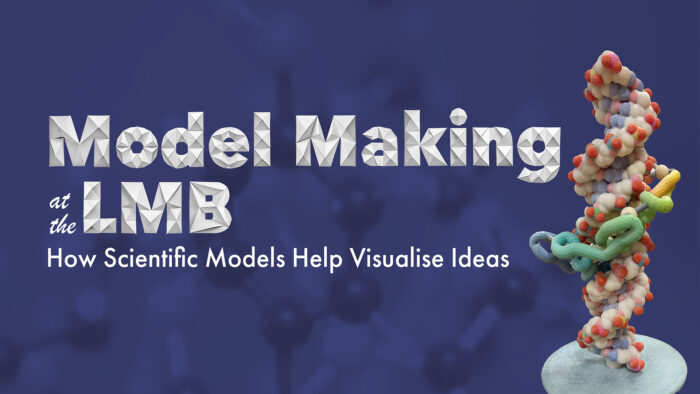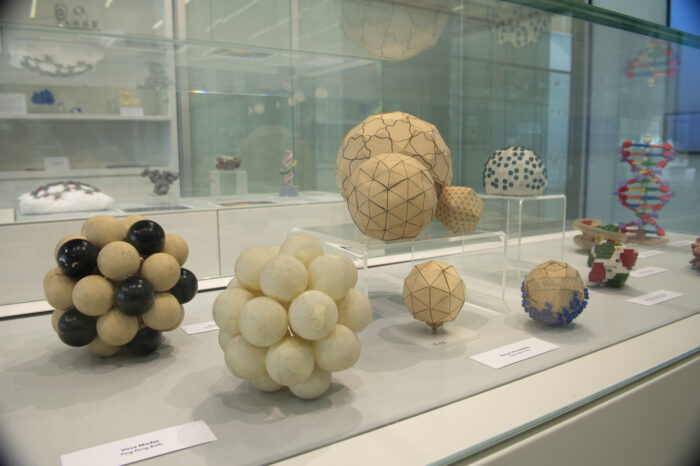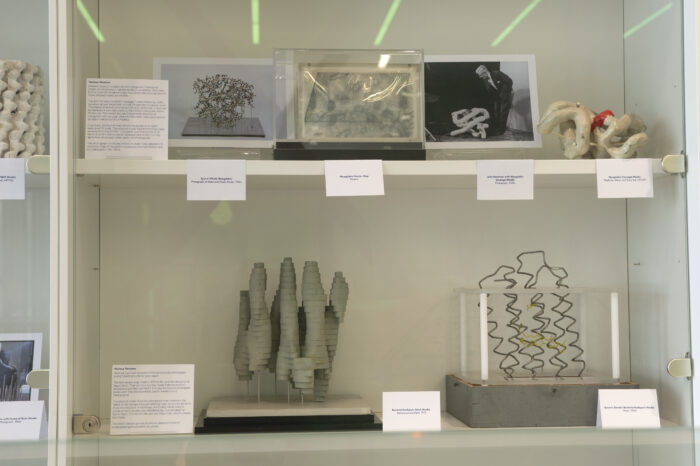
The LMB’s latest exhibition highlights the importance of scientific models in research and outreach. These objects are often underappreciated for the value they have in facilitating the creation and confirmation of theories for molecular structures. However, they have played a major part in research, and this display specifically shows the impact they have had to the LMB.
The models, photographs and drawings are from the LMB Archives and demonstrate the ways in which models have developed in use, detail, and format. This exhibition takes visitors on a journey to understand models as ad hoc objects created in the labs, as more robust items professionally constructed, and as outreach material to help explain scienfitic ideas.

The exhibition particularly showcases the specialist nature of model making, highlighting how fortunate the LMB is to have an in-house workshop. Historically the LMB also featured a model room to create in-house structures, and models are often seen displayed around the LMB builidings past and present.
An interesting feature of the exhibition is the development of molecular structures as seen in different levels of detail over time. For example, there are several versions of Myoglobin on display, from the initial John Kendrew Sausage Model, to further developments of viewing the protein at 6Å and 2Å resolution scales. These visual comparisons help us to understand the leaps in technology and scientific discovery over the years.

The exhibition also acknowledges the modern means of creating models. The display features 3D printed material, from the Archives and on loan from current LMB scientists. The importance of computational modelling has also been a vital development with manipulated forms and animations being used in a modern context to demonstrate how molecules and structures work. This exhibition celebrates the history and current practice of model making and it welcomes the inclusion of more LMB staff to get involved and share their models.
The LMB exhibition room is located next to the reception and is accessible to everyone during working hours. Please sign our guestbook when you visit and let us know what you think of the exhibition. We value your feedback.
Further references
LMB Exhibitions
LMB’s new exhibition room is officially open
Curios of 60 years of the LMB